
Walking the River Spey – Sea to Source
My name is Chaz Powell. I'm an Explorer, Expedition Leader, Survival Guide and Ranger.
When not on a remote expedition along one of Africa's Wildest Rivers, I work as a Ranger up in the North Scottish Highlands. My role as an Access Ranger is to engage with visitors about the Scottish Outdoor Access Code, making sure people respect the land and its people, encouraging leaving zero trace of their visit.
I have a huge passion for exploring this part of the world and it is an honour to help preserve it's wild spaces.
Sea to Source
The River Spey begins its journey in the Monadhliath Mountains to the west of Laggan in the Scottish Highlands. From there, it flows for 100 miles through the northeast of Scotland before reaching the sea at Spey Bay, 5 miles west of Buckie.
It carves its way through the Cairngorms National Park, passing through the towns of Newtonmore and Kingussie, crossing Loch Insh before reaching Aviemore, giving its name to Strathspey. Then it flows the remaining 60 miles northeast to the Moray Firth.
What is the River Spey Famour for?
The River Spey is considered to be the finest river in Scotland and is famous for both its whiskey and salmon fishing. There are many distilleries dotted along its course and the region supports a wide range of wildlife, including the ‘King of Fish’, the Atlantic Salmon.
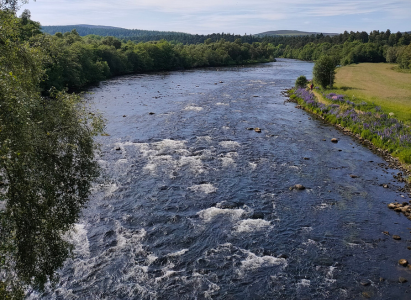
Walking the River Spey Route
The Speyside way is a long-distance footpath that follows the river for 87 of its miles from Newtonmore to Buckie. We decided to walk this route from sea to source during June, which made for great weather conditions. I’d recommend tackling the walk anytime between April and October to be sure of getting these good trekking conditions, highlighting June-September as the most ideal time weather-wise.
We opted to wild camp throughout our 6-day trek along the river’s course. We made sure we consciously pitched up well away from any towns or villages and were sure to leave our campsites exactly as we found them, leaving zero trace of our stopover and always obeying the rules of The Scottish Outdoor Access Code. Find info here: www.outdooraccess-scotland.scot
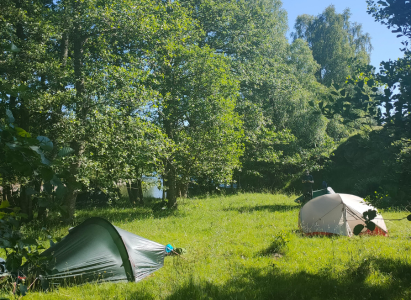
What Hiking Experience is Needed?
Our group had a varied range of hiking experience, but we all managed to complete the trek in a comfortable manner and without issue. The route itself is ideal for anyone with a basic level of fitness. There are plenty of idyllic little places along the river to stop and rest your legs, and we found that the towns and villages we passed through catered well for food, accommodation or any much-needed supplies or outdoor kit. With Aviemore, especially, being a tourism hub that is packed full of restaurants, hotels, supermarkets and outdoor shops.
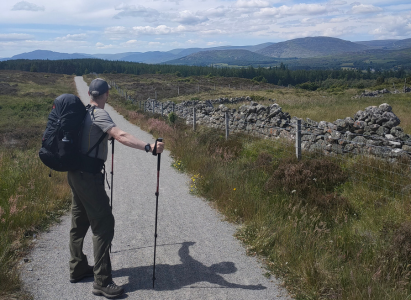
What Hiking Gear Should I Take With me?
I packed fairly light for the hike with a couple of Craghoppers t-shirts, 2 NosiLife Adventure Shirts and 2 pairs of Kiwi Pro trousers. A lightweight tent, a 3-season sleeping bag, a sleeping mat and a backpacking stove was also in my bag. Other little bits I packed were a first aid kit, a handful of dehydrated meals, a filter-based water bottle, and a ‘The Speyside Way’ waterproof map.
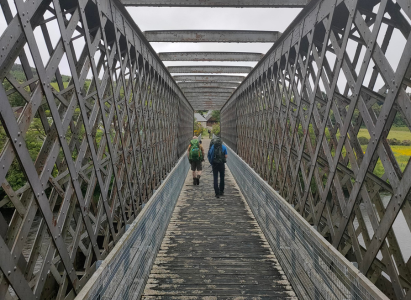
Where to Park When Walking the River Spey
Parking-wise, we decided to leave a vehicle at each end of our walk. We left one in a layby in Laggan near the river’s source and the other at the Spey Bay Golfclub carpark (with the permission from the site owners), near the river’s mouth. This made it easy to transport back to the second vehicle once we had finished our journey. Alternatively, there are good bus or railway links for anyone who might be thinking of tackling this hike solo or without a second vehicle option.
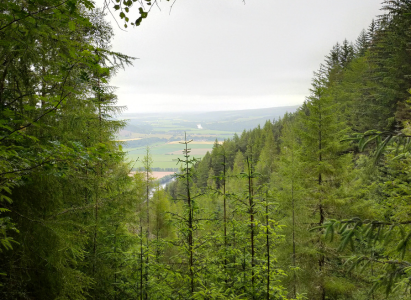
During the trek itself we passed many different interesting places to stop-off and explore. There are various museums, castles and nature reserves to get off the path and explore more of. There are also beautiful Lochs that are ideal for anyone looking to be even more adventurous during their trek and take a wild swim or other alternative activities such as kayaking or paddleboarding. Myself, I’m a keen birdwatcher, so I particularly enjoyed Osprey spotting at Loch Garten and the various other RSPB sites dotted along the way.
